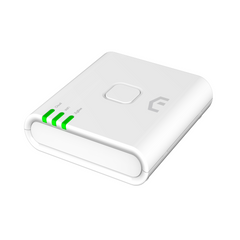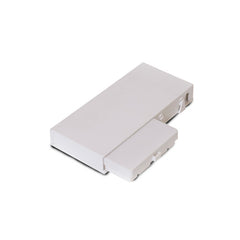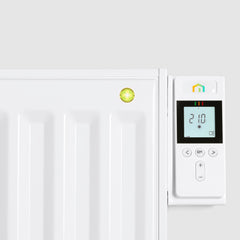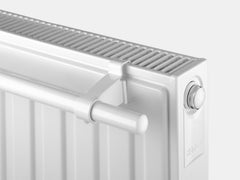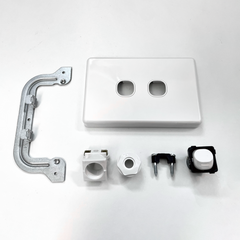
convection
Convection vs Radiant Heat – What’s the Difference?
Few things are more valuable than a good heater on a cold winter’s night. But there’s more to designing the perfect heating system for your home than simply choosing the size and location of your heating units. The type of heat generated has a big impact on how comfortable and effective your heating system is.
Here we take a closer look at the two different heat types – convection and radiant. As part of this, we will explore how they work and where they are most effective. We will also share our thoughts on when you should choose each type and how to design the ideal heating system.

What is convection heat?
Convection heat is heat energy that's transferred by the movement of air or liquid. Imagine turning on a hairdryer... that blast of hot air you feel is convection heat.
Convection is the type of heating most Australians would be most familiar with – think split systems, gas ducting, and convection panel heaters. These systems harness the natural air currents created as warm air rises and then falls as it cools.
The benefit of convection heating is that it’s great at spreading out and travelling around corners and objects. A single unit like a split-system can heat multiple rooms provided it has enough capacity for the space.
The downside is that convection heat is easily lost to draughts and gaps. An open door or window can lead to a lot of heat escaping very quickly.
The other issue is the uneven vertical distribution of convection heat in a room. Hot air rises, and this means the top half of the room ends up much warmer than the bottom half. As the hot air trapped on the ceiling cools, it flows down the walls and along the floor - often creating a noticeable cold draught flowing back towards the heater. This can cause the uncomfortable feeling of having cold feet and warm head.
If you're in a home with high ceilings, or an open staircase or void, this problem is even worse, as the heat will naturally get trapped at the very top of the house.
To combat some of these issues, some convection heaters use fans to speed up the circulation of warm air. These can be quite noisy and kick up dust, which can be a real concern for people with allergies. Many people also find convection heat less comfortable, as the warmed air can make a room feel “stuffy”.
Overall, convection heating is a great for circulating warmth throughout a home, and fan-forced systems can heat large spaces up very quickly. But if you're using a convection-only heating source, you may find some of the downsides start to negatively impact the comfort of your home.

What is radiant heat?
You know the instant warmth you get from the sun on your face on a cold, clear day, or the warm glow of a campfire on a cold night? That’s radiant heat.
Radiant heat is infrared light energy. It travels in waves and heats objects (including people) in a room directly. It's completely-safe, and unlike convection heat, it isn't affected by air currents or draughts.
Radiant heat feels quite different, and a lack of radiant heat in a space can make people feel cold and uncomfortable, even if the air temperature is warm.
Some heating systems, like infrared heating panels, distribute all of their heat as radiant energy. Because the heat isn't affected by draughts and wind, these are a popular choice in outdoor restaurant or cafe settings.
For indoor settings, the vertical distribution of radiant heat is much more even, because it doesn't rise straight to the ceiling like convection heat.
The big caveat here is that, because it’s a direct heat source, radiant heat doesn’t really spread throughout a space and around corners as well as convection heat. As such, a purely radiant heater really needs to have a direct line of sight for it to be truly effective.

Which is better?
As we've seen, both heat types have their strengths and limitations, and one is not necessarily better than the other.
In fact, the most comfortable heating system for homes is usually one that produces a balance of radiant and convection heat, without noise, dust and blowing air.
This balance of heat types allows heat to be distributed evenly, both vertically and throughout the space. Convection currents are still able to circulate the warm air around larger spaces, but this doesn't feel as draughty because the walls and floors have been heated by radiant heat.
When the balance is right, it doesn't feel like you're being heated up. The room is just stays perfectly comfortable, and it's easy forget the heating is even turned on.
Hydronic heating systems produce this kind of balanced heat, and that's why Europeans have been using them to stay cosy during brutal winters for decades. Australians are increasingly recognising there's a big difference in comfort between these systems and the convection-only systems we're used to.
The downside of hydronic systems is that they tend to be difficult and expensive to install and maintain, especially if you want to run them off electricity instead of gas.
As an alternative, some electric radiators, like Purmo’s wall-mounted oil radiator range, create this exact same balance of heat types, without the difficult installation and maintenance. They're much more flexible too, you can install in a single room or an entire home.
Want to discuss this further?
If you would like more information on the different heat types or Purmo’s innovative panel heaters, give us a call. Our experienced team can also help you work out your home’s exact heating requirements and design the perfect system Start your free online quote today to find out more.
Back to top



